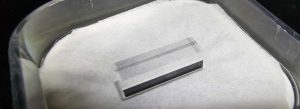The Er:YAG laser is a powerful tool in the cosmetic surgeon’s armamentarium that can have beneficial effects when used properly for the correct indication. Mild-to-moderate photo-induced rhytides, superficial pigmentation, atrophic scars, and a variety of epidermal and dermal lesions can be treated successfully with the Er:YAG laser. Treatment with the short-pulsed Er:YAG laser is particularly well suited for patients with darker skin phototypes. Several studies have documented a lower risk of pigmentary alterations as compared to carbon dioxide laser resurfacing. Although studies suggest modulated Er:YAG lasers are associated with a lower risk of pigmentary alterations than carbon dioxide laser resurfacing, long-term data regarding the risks of delayed hypopigmentation are not yet available. The interaction of the target tissue with the energy of the carbon dioxide laser is transformed mostly into a thermomechanical reaction that destroys dermal vessels and denatures dermal proteins. In the case of the Er:YAG laser, the interaction involves a photomechanical reaction. Absorption of the energy causes immediate ejection of the desiccated tissue from its location at a supersonic speed, creating a characteristic and almost startling “popping” sound. This translation of Er:YAG laser energy into mechanical work is an important factor that protects the surrounding tissue; minimal thermal energy remains to dissipate and cause collateral damage. Although thermal necrosis does not significantly interfere with subsequent passes of the laser, blood in the wound bed makes controlling the wound depth difficult.
- Products
- Applications
- Support
Cooperation
- Company
Others
- Blog
- Contact Us







